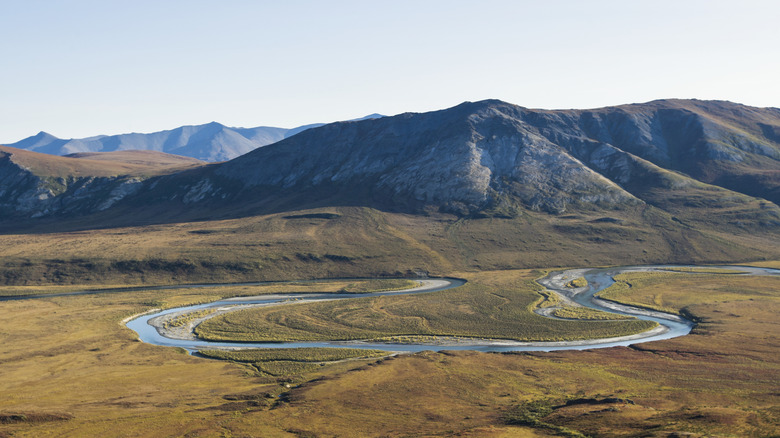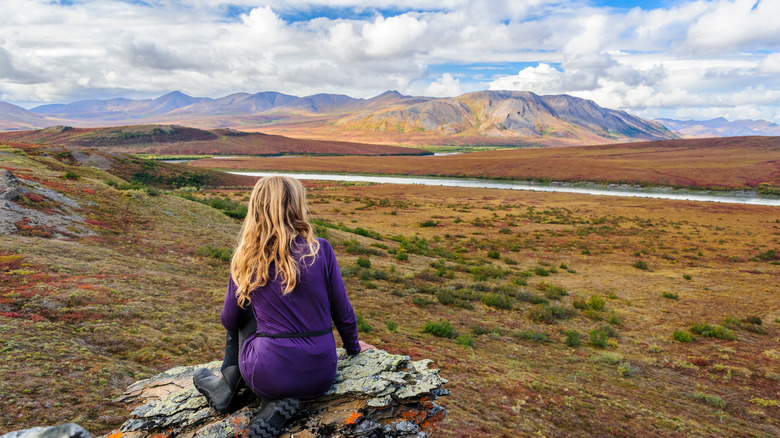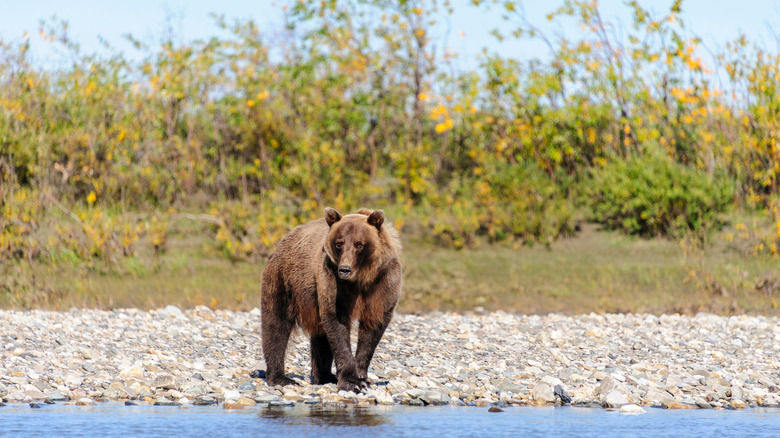Alaska's Own Grand Canyon Is A Wild Spectacle Hidden In America's Largest Unaltered River Basin
One of America's last free-flowing rivers courses through an Arctic paradise called the Noatak National Preserve, and carves Alaska's very own Grand Canyon out of the barren mountains of Western Alaska. Accessible only by boat or plane, the Grand Canyon of the Noatak is a stunning and rugged geological feature along the wild and scenic Noatak River. The Noatak runs from Gates of the Arctic National Park in Northern Alaska's Brooks Range all the way to Alaska's coast, where it empties into Kotzebue Sound and the icy Chukchi Sea. The Noatak is one of Alaska's longest designated wild and scenic rivers, and it flows unimpeded and unaltered for 330 miles, making it the longest free-flowing river in the United States.
While the Grand Canyon of the Noatak in Noatak National Preserve is modest in comparison to the Southwest's Grand Canyon, where hikers can find solitude on this less-traveled, beautiful backcountry route, it's a remarkable testament to the power of water and how, over eons, it will carve through earth and stone. That's what the Noatak has done as it slices through the mountains in its 65-mile course through its own Grand Canyon. In addition to being the nation's longest free-flowing river, the Noatak is also the largest mountain-ringed river in the country, making it a significant source of high-quality water for much of Western Alaska.
How to get to the Grand Canyon of the Noatak
Unlike most other national parks in the United States, visitors to Noatak National Preserve and the Grand Canyon of the Noatak can't just hop in the car and go. It's not on any road trip for national park lovers looking for unmatched adventure and beauty. The canyon and preserve are quite remote, and most visitors arrive by plane, and some of those visitors pack in rafts and float their way down the Noatak, where they'll meet another plane for the ride out of the Alaskan wilderness. There are no roads in the preserve, so a vehicle is simply not an option.
While it's challenging to get to the preserve and to see the Grand Canyon of the Noatak, it's not impossible. It will take some planning, and visitors will need the help of an authorized air service that can provide a bush pilot to drop them at a designated camping area and put-in on the river. That same service can be used a second time at a designated take-out. But, before any of those plans are made, travelers must first make commercial flight reservations to either Kotzebue or Bettles from either Anchorage or Fairbanks. Throw in the need to rent bomb-proof canoes or rafts, paddles, camping gear, and water- and weather-proof clothing, it's easy to see that a trip to the Grand Canyon of the Noatak requires some significant planning. There's no such thing as a "casual" trip to the Arctic, and first-timers should always hire a guide to show them the ropes of such an adventure before ever trying a backcountry trip on their own.
What will visitors to Noatak National Preserve see?
In addition to seeing the breathtaking Grand Canyon of the Noatak and the gorgeous river that slices through it, visitors to the Noatak National Preserve will get the chance to experience a true Arctic wilderness. Here, there are no cell signals or convenience stores — everything travelers take with them is everything they have. Many visitors who opt to float certain stretches of the river take fishing gear along — this helps them supplement their meals with Dolly Varden (a colorful Arctic char fish), Arctic grayling, and whitefish. In some sections of the river, chum salmon are present, too. This allows visitors floating the river to pack a bit lighter and roast delicious wild fish over a gravel-bar campfire.
In addition to some of Alaska's most breathtaking viewscapes, visitors to Noatak are likely to encounter wildlife on their journey. The preserve is home to both black and brown (grizzly) bears, Arctic foxes, moose, wolves, musk ox, Dall sheep, and wolverines. The preserve is also home to Alaska's largest herd of caribou — it numbers nearly 500,000 animals. For birders, the preserve offers an Arctic bounty. Here, they'll see everything from loons and ptarmigan to gyrfalcons, rough-legged hawks, and eagles. In all, the National Park Service estimates that there are 147 bird species, 39 species of mammals, and 13 fish species. Chances are, on a visit to the preserve, travelers will encounter at least some of these beautiful wild creatures, which should put Noatak on any list of national parks and preserves to visit if you want to avoid crowds and admire wildlife.


